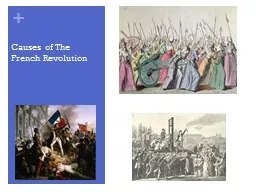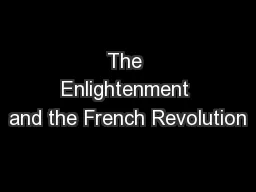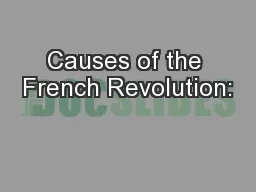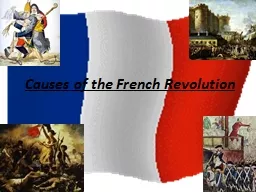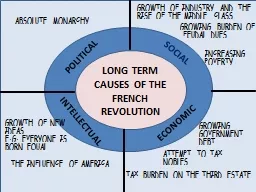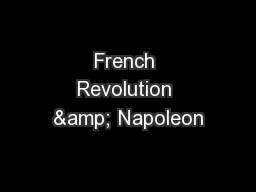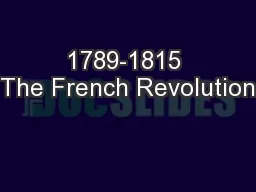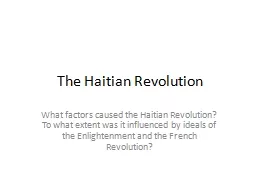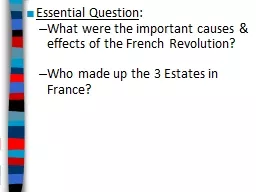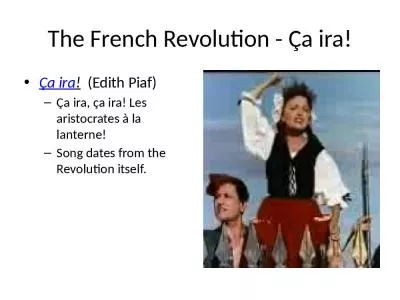PPT-Causes of The French Revolution
Author : yoshiko-marsland | Published Date : 2018-10-06
Historical interpretations of class conflict leading to the French Revolution Bourgeoisie was united by economic position and class interest and frustrated by feudal
Presentation Embed Code
Download Presentation
Download Presentation The PPT/PDF document "Causes of The French Revolution" is the property of its rightful owner. Permission is granted to download and print the materials on this website for personal, non-commercial use only, and to display it on your personal computer provided you do not modify the materials and that you retain all copyright notices contained in the materials. By downloading content from our website, you accept the terms of this agreement.
Causes of The French Revolution: Transcript
Download Rules Of Document
"Causes of The French Revolution"The content belongs to its owner. You may download and print it for personal use, without modification, and keep all copyright notices. By downloading, you agree to these terms.
Related Documents

